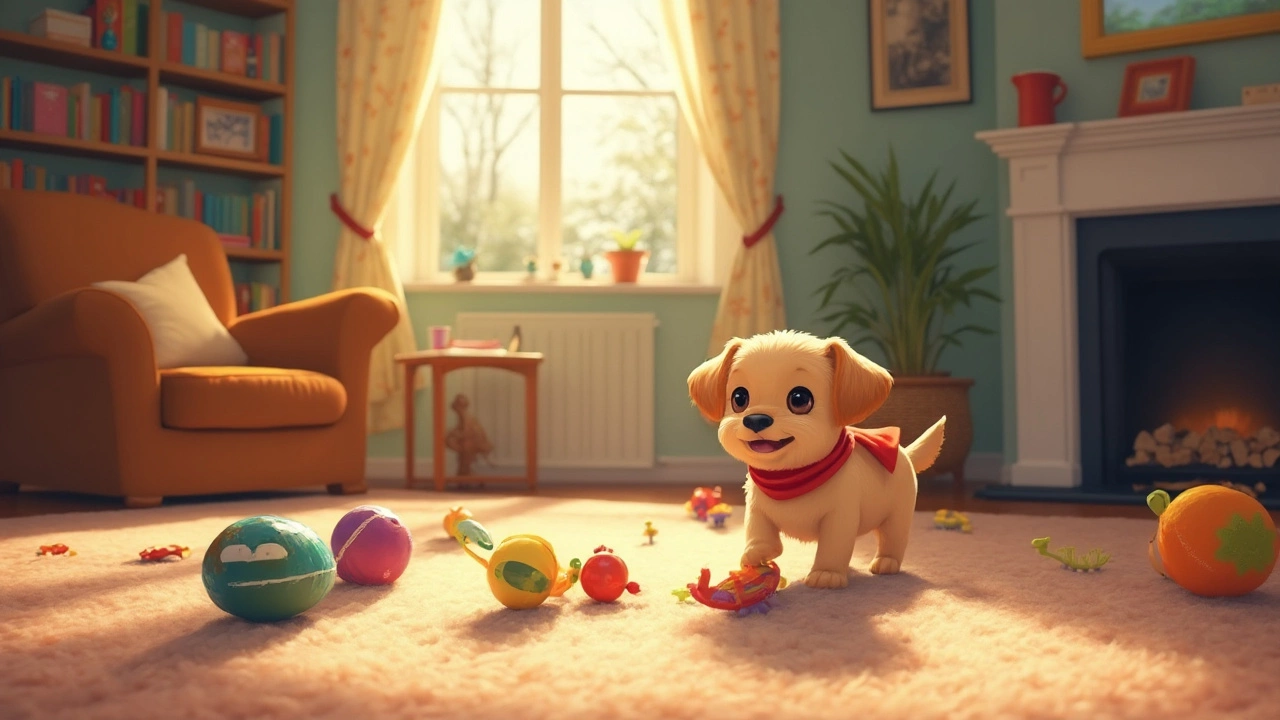Home Alone Puppy: Simple Ways to Keep Your Pup Safe and Calm
Leaving a puppy at home can feel stressful, but you don’t need to panic. With the right setup, your little dog can stay comfortable, safe, and even enjoy the alone time. Below are the basics you need to get right before you head out the door.
Set Up a Secure, Cozy Space
Pick a room or a crate that’s big enough for your puppy to stand, turn around, and stretch. Add a soft bed, a chew toy, and a water bowl. Make sure there are no wires or small objects they could swallow. A baby gate works well if you want to block off a larger area without using a crate.
Crates are great because they give a den‑like feel that many pups love. If you use a crate, keep the door open for a few minutes while you’re still at home so the puppy gets used to it. Once they’re relaxed, you can start closing the door for short periods.
Prevent Boredom and Anxiety
Dogs are social, so a bored puppy can get into trouble. A frozen Kong stuffed with peanut butter or wet food provides a tasty distraction that can keep them occupied for 20‑30 minutes. Rotate toys so they don’t get stale.
If your puppy whines or barks, try a short background noise. A radio set to a talk station or a playlist of calm music can mimic human presence and reduce the feeling of emptiness. Just keep the volume low.
Stick to a Routine
Puppies thrive on consistency. Feed, potty, and play at the same times each day, even on weekends. When you know your puppy’s schedule, you’ll also know the best windows for leaving them alone. Most experts say a healthy puppy can handle 1‑2 hours by itself once they’re fully house‑trained.
Before you leave, give a quick potty break, a short walk, and a play session. This burns off excess energy and makes them more likely to settle down while you’re out.
Monitor With Technology
A pet camera lets you check in, talk to your puppy, and see if they’re getting into trouble. Some cameras even dispense treats, which can be a helpful reinforcement when you catch them being calm.
Don’t rely on the camera as a substitute for training, but it can give you peace of mind and help you spot patterns you might miss.
Gradual Desensitization
If your puppy gets anxious the moment you step out, start with micro‑sessions. Leave the house for 30 seconds, then return. Extend the time by a few minutes each day. Over a week or two most puppies learn that brief absences are normal.
Pair each departure with a high‑value treat or a favorite toy placed in the safe space. This creates a positive association with being alone.
Remember, every puppy is different. Some may need more time to adjust, while others nap happily after a short goodbye. The key is to stay consistent, keep the environment safe, and give them something to focus on.
At Oakwell Gundogs and Pet Services we see many owners worried about leaving their pups alone. If you need tailored advice or want a professional to help with crate training, give us a call. A quick session can turn nervous whines into quiet, confident alone time.
- Morgan Ainsworth
- 0 Comments
Can I Leave My 10-Week-Old Puppy Home Alone?
Leaving a 10-week-old puppy home alone can be tricky, but understanding their needs for company, safety, and entertainment is crucial. Puppies this young are still getting used to their environment, and leaving them alone requires thought and preparation. This article explores the importance of suitable toys, the benefits of crate training, and offers practical tips for ensuring your puppy stays safe and happy. Discover how to make your puppy's alone time positive by engaging their curiosity and energy. Equip yourself with the knowledge needed to handle your puppy's independence with confidence.
View More
